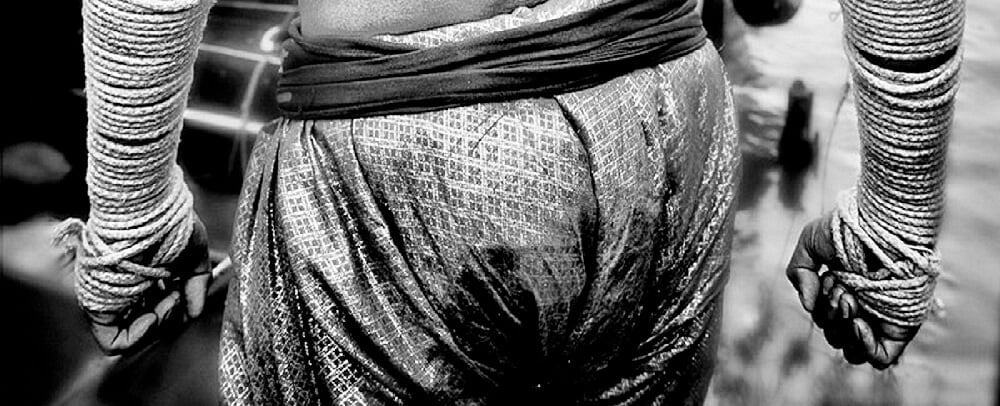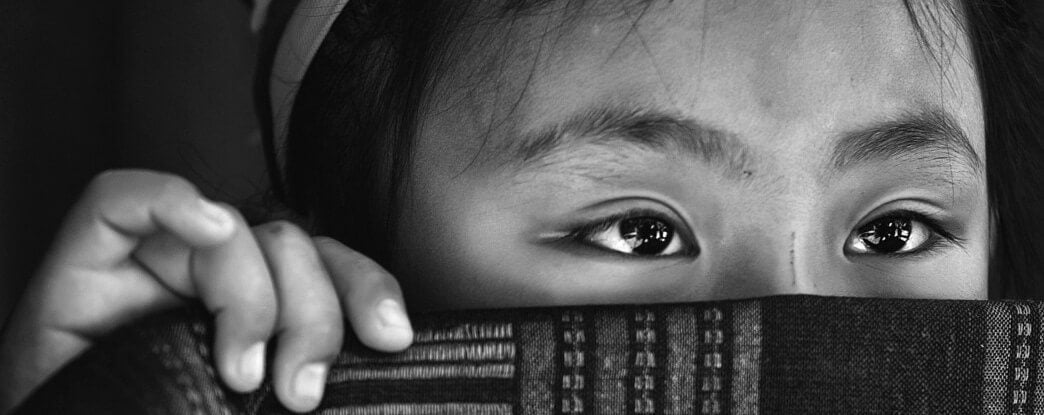Traveling and discovering is sometimes about being in the right place on the right day, for us that day was March 17th, when Thailand celebrates the Nai Khanom Tom day.
There are many different names for this celebration such as “National Muay Boran day“, “National Muay Thai day” or “Boxer’s Day“. Discover Nai Khanom Tom – The Father of Muay Thai, who is celebrated that special day.
In this Article
Muay Thai- Thai Boxing
Muay Thai is Thai Boxing, the National sport of Thailand but this celebration is not just about Muay Thai, it’s a commemorative day to honor and homage Nai Khanom Tom – The Father of Muay Thai and all the ancient teachers who developed Muay Boran into the contemporary Muay Thai, the art of the 8 limbs.
It is called also the “Science of Eight Limbs”, because it makes use of punches, kicks, elbows and knee strikes, thus using eight “points of contact”, as opposed to “two points” (fists) in boxing and “four points” (hands and feet) used in other more regulated combat sports, such as kickboxing and savate.
On the battlefield swords, shields, and conventional weapons aside, the systematic use of the body’s hardest points came to be known as classical Thai boxing or Muay Thai Boran, it employs the natural weapons of the human body in imitation of the ancient weapons of war.
For example the arms are used like a sword, the shins are conditioned to strike like a staff, the elbow and knee are used like a war ax, the fist operates like the tip of a spear, the foot works like an arrow or pike, and the head hits like a war hammer. If a soldier lost his weapons on the battlefield, he would fight on using his body.
The Muay Thai manual “The most distinguished art of fighting” by Panya Kraitus paints a vivid picture of early Thai boxing techniques as used by the legendary warrior Phraya Phichai of the broken sword:
“He was the commander in chief of the army who led the common people in bravely resisting the enemy without giving thought to the possibility of his own death.
For love of his country, he pushed fiercely forward in battle until his sword broke. Throwing it down he continued the fight with his fists, knees, and elbows.
Because of his knowledge of Thai boxing, he came out of the battle alive and victorious.”

The sport’s history is shrouded in myth. It’s even possible that it wasn’t developed in Thailand – Laos, Cambodia and Myanmar (formerly Burma) claim responsibility for its origins.
The first depiction of what appears Muay Thai is on a Khmer temple. The influence of the Khmer was dominant over ethnic Mon territory that spread from Northern-Cambodia up to Southern- and Northern-Thailand, from the 12th century till the first Thai kingdoms emerged.
What is certain is that the history of Muay Thai is closely and uniquely intertwined with the history of Thailand.
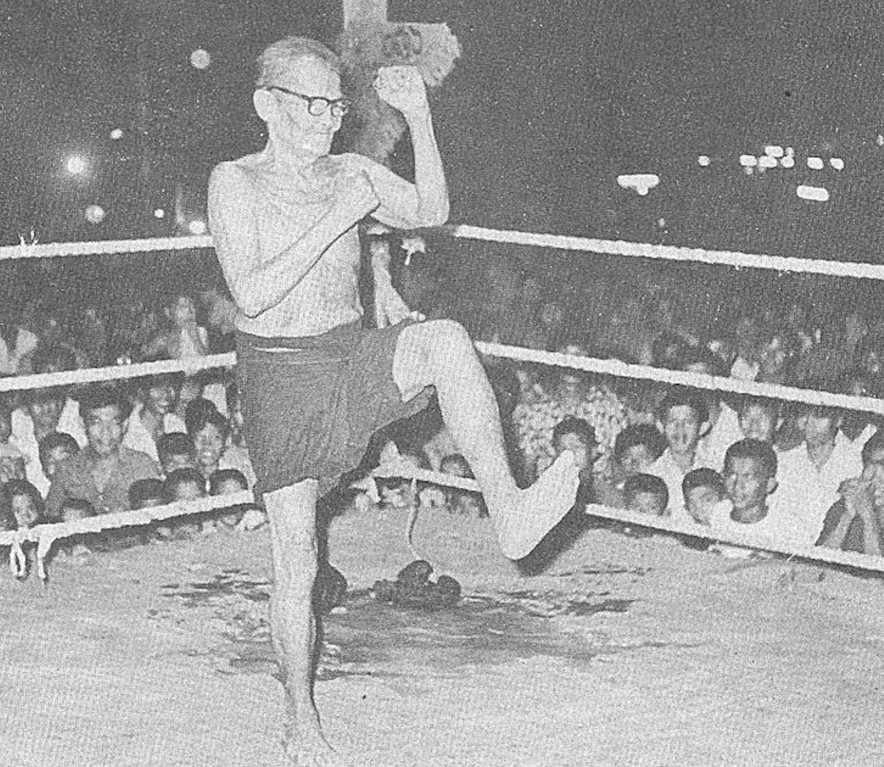
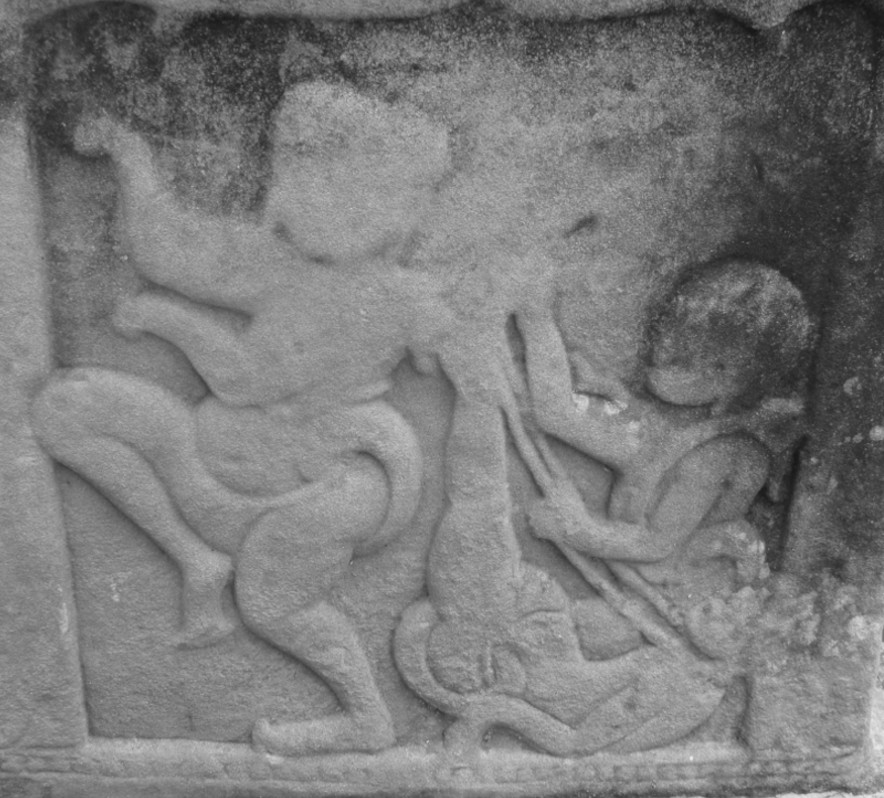
What is MUAY?
According to “Muay Thai: A Living Legacy”, by Kat Prayukvong and Lesley Junlakan, Thai people first began training in Muay in the Sukhothai period (1238-1377) – a skill they would later use in multiple wars against the neighboring country of Burma.
In temples, Buddhist monks taught young boys Muay as part of their daily education. At that time, the training included punching loincloths hanging on tree branches and kicking banana trees, says the Web site for the Muay Thai Institute in Bangkok.
As well as being a practical fighting technique for warfare, Muay Boran [much like Kung Fu, this general term covers a spectrum of traditional and regional related fighting systems] became a sport in which the opponents fought in front of spectators who went to watch for entertainment.
The tradition of boxing competitions is hundreds of years old. It is told that in the 12th century C.E., in the period known as Sukhothai, and through the following Ayutthaya and Rattanakosin periods leading up to the reign of King Naresuan in 1560 C.E., Muay Thai Boran prizefighting was already a favorite pastime of the Siamese people.
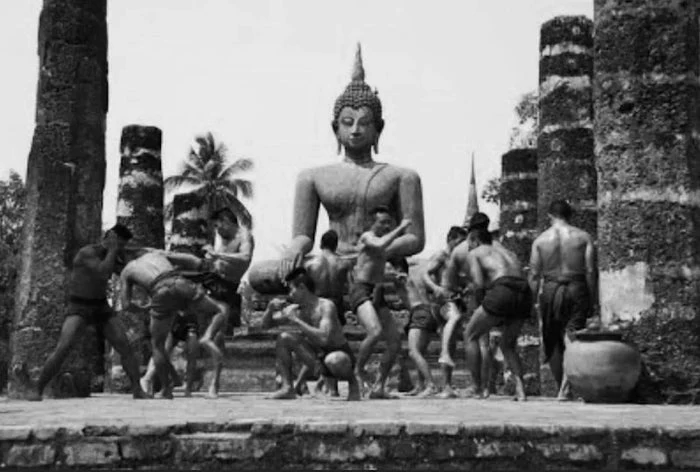
These contests gradually became an integral part of local festivals and celebrations, especially those held at temples.
During the Rattanakosin Kingdom era (around 18th-early 20th century), Muay Thai was formally became a national sport where rules and regulations were introduced.
During these centuries fighters typically fought with bare knuckles. Sometimes they wrapped their hands in rope (muay kaad chueak), mostly to protect the knuckles against injuries.
“Muay” means “To bind into rounded form”- the act of binding a person’s hair into rounded form is “Muay Phom”. As Siamese boxers wrapped their hands with hemp rope and hold their fists into rounded shapes when striking, Siamese (Thai people) called this act as “Toi Muay”, “Toi Moi” or “Tee Muay” or simply “Muay”.
On Muaysangha.com I read, that some boxers a few hours before a contest, chew rice and water, spitting it in their hand wraps so when they dry they would become hard and sharp. [According to Ajarn Ket Sriyaphai, grand master of Muay Chaiya, boxers didn’t dip their hand wraps in glue and grounded glass…He said that those ideas came from Hollywood movies. After 1950 the ropes were abolished and the boxing gloves introduced by the State.]

There’s a record about Muay in “Du Royaume de Siam”, by the French envoy Simon De La Loubere, who visited Ayuttaya during the 1600s. He described the Siamese boxing as:
…Festival is likewise accompany’d with races of Oxen,Wrestling and Boxing. and several other Diversions, as of Wrestlers, and Men that fight with their Elbow and Fist.
In Boxing, they guard their Hand with three or four rounds of Cord instead of the Copper Rings, which those of Laos do use in such Combats…
Simon De La Loubere
Every village had its local Muay champion, oral history relates that young men of all walks of life sought out the masters in hopes of training, fighting and gaining fame and recognition in Muay Thai Boran .
To become a Muay Boran student was not easy. Only those who went through at least one year of practicing footwork and stance to prove their patience and determination were considered true students. It was extremely important that a student had fully understood the Muay Thai footwork before moving on to further learning as it was believed that a practitioner’s expertise can be revealed by the way he can use his feet.
Muay boran was originally developed for self-defense and also taught to the Thai military for use in warfare, a martial art system which also had deadly techniques, grappling techniques and ground fighting techniques apart from its stand up techniques. Modern day Muay Thai is a stand up only ring sport.
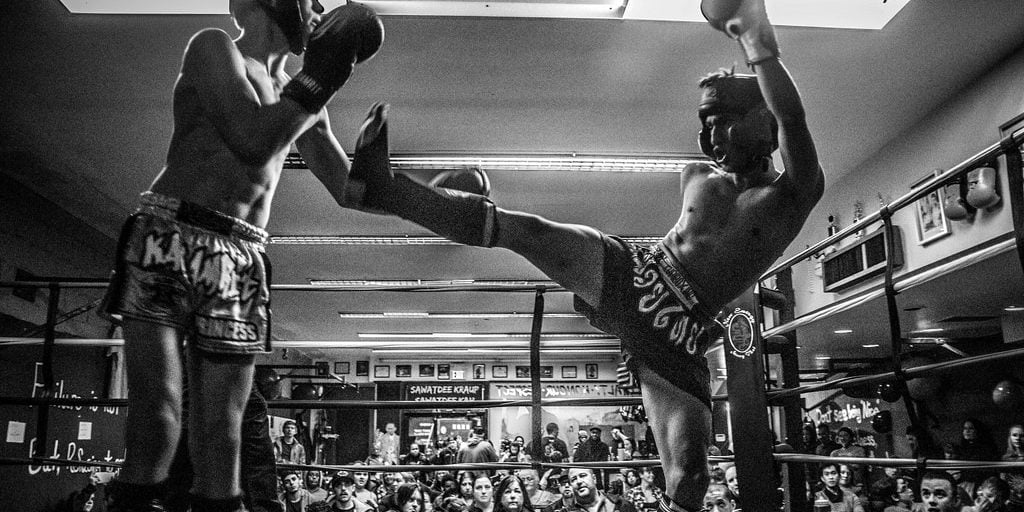
The fighters were highly respected and the best were enlisted into the King’s royal guard. During the 1920s-30s King Rama VII modernized the Thai martial arts competitions, introducing referees, boxing gloves, rounds and western boxing rings.
“boxers whom punched with fists and elbows with their hands wrapped with hemp rope which never to be seen in other neighboring kingdom.”
Many of the traditional Muay Boran techniques were banned or were not practical with the addition of the new rules, and it went into decline.
Thai national identity and Muay Thai
“Muay Thai is a sport that is fiercely tied with Thailand’s national identity as the historical development of the sport has roots in the battlefields of south-east Asia, and is closely linked with nobility with endorsements by the King.”
Vail Peter
Since the people of Thailand are proud of the fact that they are the citizens of the “country that was never colonized”, Muay Thai is known and revered in near mythological status and is often conveyed in their historical
narratives as a weapon used to battle the onslaught of other encroaching nations.

So is Nai Khanom Tomนายขนมต้ม immensely popular in Thailand. He is the subject of statues, medallions, amulets, plays, a TV miniseries and there are several blockbusters about the father of Muay Thai. He is also used to promote an energy drink as shown in the commercial.
LEGEND: Nai Khanom Tom
นายขนมต้ม – The Father of Muay Thai
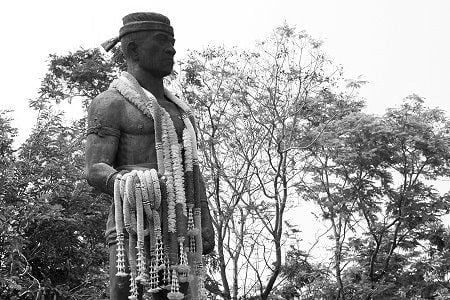
At the time of the fall of the ancient Thai capital of Ayuthaya in 1767, when the city was destablized and heading for destruction because it’s rulers were weak, the invading Burmese troops rounded up a group of Thai residents and took them as prisoners.
Among them were a large number of Thai boxers, who were held by the Burmese potentate Suki Phra Nai Kong of Kai Pho Sam Ton at the city of Ungwa.
In 1774, in the Burmese city of Rangoon, the Lord Mangra, king of the Burmese, decided to organize a seven-day, even-night celebration in honor of the pagoda where the Buddha’s relics are preserved. He ordered a royal presentation of a Thai boxing match between Thai and Burmese fighters. For the celebration, he also arranged for several folk-type spectacles such as the costume plays called likay, comedies and farces, and sword-fighting matches. The boxing ring was set up in front of the throne.
During the first day of the celebration, a high-ranking Burmese nobleman led a Thai boxer to pay his respects to the Burmese king. Lord Mangra then agreed to allow a Burmese boxer to pit his strength against that of the Thai boxer.
A referee led the Thai boxer into the ring and introduced him as Nai Khanom Tom, a famous fighter from Ayuthya, the viewers saw a robust, dark-skinned captive. Among the group of Burmese spectators was a group of Thai captives who view with each other in cheering him.
As soon as he matched with a fighter, Nai Khanom Tom began dancing around his opponent, which amazed and perplexed the Burmese spectators. The referee then announced that the dance was a Thai tradition (wai khruu) through which the boxer paid his respects to his mentor.
Then the signal for the fight was given, Nai Khanom Tom rushed forward, elbowing and pummeling his opponent in the chest until the latter collapsed. The referee, however, judged that the knockout was not to be considered a victory for the Thai boxer, since his Burmese opponent had been distracted by the wai khruu dance, so Nai Khanom Tom had to confront nine other Burmese boxers. This decision prompted the other Thai boxers to volunteer to fight together with Nai Khanom Tom to avenge him.
Nai Khanom Tom agreed to fight against the other Burmese boxers to uphold the reputation of Thai boxing. His last opponent was in fact a boxing teacher from Ya Kai City who was on a visit to enjoy the festivities. Thus, he volunteered to fight, but was soon so mangled by Nai Khanom Tom’s kicks that no one dared to challenge him further.
However, Lord Mangra was so enthralled with Thai boxing that he summoned Nai Khanom Tom to reward him, asking which he would prefer, money or beauteous wives. Without hesitation, Nai Khanom Tom said he would take the wives, because money was easier to find. So Lord Mangra awarded him two Burmese girls from the Mon tribe.
Impressed by his abilities, King Mangra said:
“Every part of the Siamese is blessed with venom. Even with his bare hands, he can fell nine or ten opponents. But his Lord was incompetent and lost the country to the enemy.
If he had been any good, there was no way the City of Ayutthaya would ever have fallen“.
Nai Khamon Tom took his lovely wives to Thailand, where he lived with them until the end of his life.
Dust, Tattoos and Dance: Rituals and Traditions of Muay Thai
Thai people are known for believing in evil spirits and ghosts. For centuries Muay Thai fighters have used sacred tattoos, wards, amulets and spiritual ceremonies and other rituals to ensure their good fortune and ward off bad luck and evil entities that may follow them into the ring.
Mongkong and Pra Jiad
Some of them also wrap fragments of their ancestor’s bones in their Mongkong or Mongkol (headband) or Pra Jiad (armbands) tied around the bicep. This act represents the good spirits of their ancestors and protects them from injury and evil spirits in the ring.
They originate back in times when Thailand was in a constant state of war, where young men would tear off pieces of a loved one’s clothing (often their mother’s sarong) and wear it to battle for good luck as well as to ward off harmful spirits. In modern times the Mongkol (lit. meaning holy spirit, luck, and protection) is worn as a tribute to the gym that the Muay Thai fighter is fighting out of.
The Yant
Some fighters will go to temples (Maa Doo), a witchdoctor/medicine man, or a high-ranking priest to have Thai inscriptions tattooed into their skin. All sak yant tattoos are traditionally done by practicing Buddhist monks with bamboo needles.
A Yant is a sacred geometric design which includes ancient scriptures that are said to invoke spiritual and magical powers. Yants are believed to be powerful and provide protection from negative influences like bad luck, ghosts and spirits.
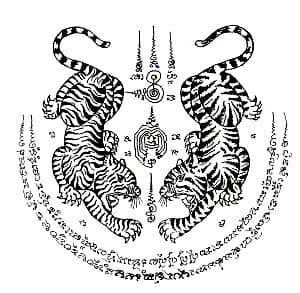
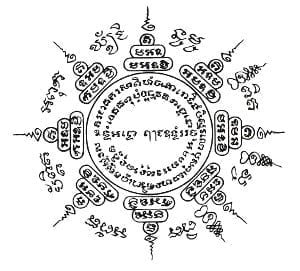


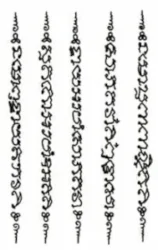
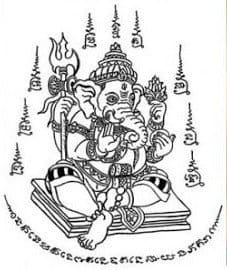
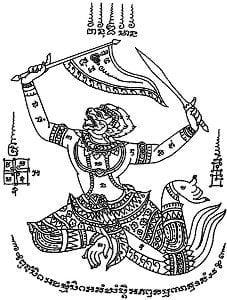
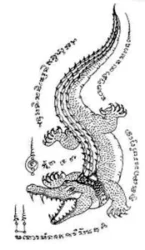
Other tattoos are told to grant strength, courage, long-life, or sexual prowess. Before a fight, fighters would rub special oils and herbal mixtures or potions on their skin to make them invulnerable and impervious to pain and injuries.
The Kreung Rang
Special Kreung Rang (amulets) worn around the neck were believed to wield distinctive magical powers. Some amulets contained written inscriptions with wards and protections rolled up in a small cylinder.
Others came from important temples and bore images of Buddha or highly-revered monks. The form in which these blessings came was beside the point; they were all meant to give the fighter confidence in the ring.
Sprinkling dust on the head
The ritual of sprinkling water, dust or talcum powder among Thai boxers was done before jumping in the ropes. It was said to be a way of casting a spell known as hanuman crawls in the dust. This spell was said to soften up and make even the most aggressive adversary weak.
Usually this ritual among the boxers was accompanied by a prayer about Lord Buddha, his teachings – Dhamma and the monks, sangha – the monastic communities of bhikkhu (monks) and bhikkhuni (nuns). It was believed that the more dust the more effective was the prayer.
However, a more real and probable reason for this ritual is that in the past boxers would fight on bare ground and to better acclimatize to the terrain in which they were fighting they disguised it by reciting the spell and touching the ground in question.
Grounds that where made of clay where harder for fluent with boxing and elbows, while in hard solid ground the boxers could flow more easily with rapid footwork but when fighting in sand the boxers had to be more cautious with every movement to avoid slipping.
Ritual Dance of Homage – Wai Kru
The ritual of the Ram Muay and the Wai Kru ceremony that the boxer performs in the ring before each match is part of a larger set designed to demonstrate respect and gratitude towards teachers- and today it is also seen as a tribute to the gods, the king, the country, and the family.
The Wai Kru also serves to focus the fighters concentration and loosen muscles before fighting.
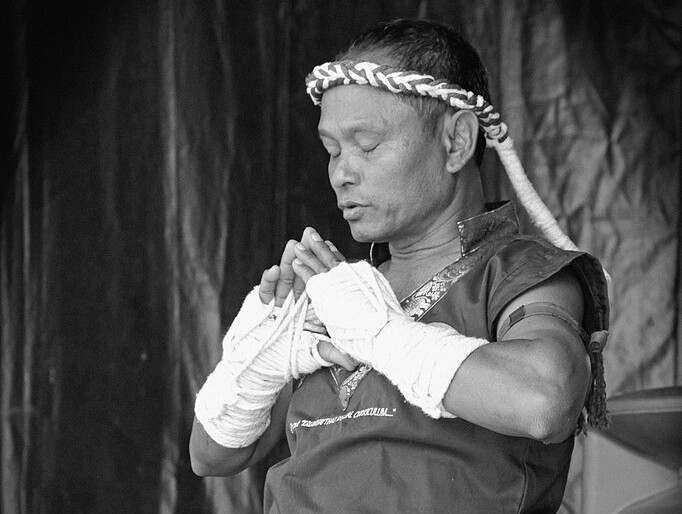
The music of Muay Thai is called “Sarama”and at many big stadiums in Thailand live bands play the music.
The instruments used in the Sarama are:
- the Pi Java (Javanese Clarinet or flute),
- the Kong keeg two face drum, with one “male”, that gives a high pitch sound, and one “female” that gives a low pitch sound.
- the Ching, cymbals, generally made of brass or iron.
- the Kong Mong instrument from South Thailand: a big plate hit by a wood hammer. This instrument gives the rhythm to the melody.
Music is important to the Wai Kru ritual and a tangible part of the fight itself. The motions from the Wai Kru and Ram Muay are highly stylized and actions in the dances are symbolic of the Indian epic Ramayana. In general, there are two parts of the Ram Muay: the first part is from the ground and the second part is done standing up.
This mirrors the way that ancient teachers taught students, first kneeling in the ground to learn the hands or weapons and make the legs and the patience strong. Only after, the different footwork patterns were learned. Before executing the Wai Khru Ram Muay ritual the fighter shall:
Think about your religion,
Think about your parents,
Think about your teacher,
And think about one you loved who has passed away
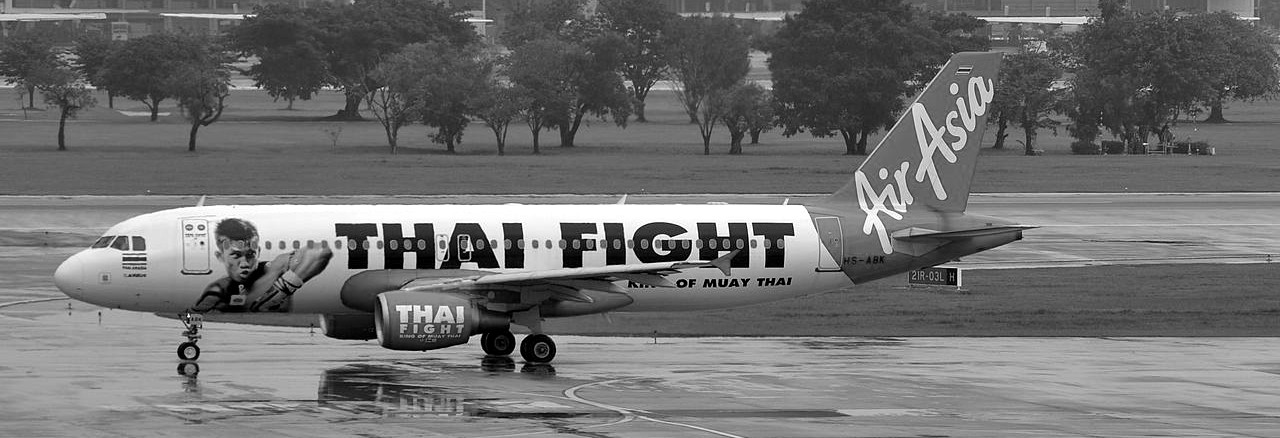
~ ○ ~
Keep exploring:
Works Cited & Multimedia Sources
- Doctors call for crackdown on child boxing. https://web.archive.org/web/20171223010455/https://www.bangkokpost.com/news/general/1383386/doctors-call-for-crackdown-on-child-boxing.
- History – The Story of Nai Khanom Tom. https://thaiboxing.com/muay-thai-history/
- History of Muay Thai & Muay Thai training. What is Muay Thai? https://www.tigermuaythai.com/about-muay-thai/history.
- History Of Muay Thai. https://web.archive.org/web/20181224163342/https://onlinemuaythaiuniversity.com/about/
- History of Muay Thai. https://www.kombatgroup.com/history-of-muay-thai
- History of Muaythai. https://web.archive.org/web/20200226192824/http://www.ifmamuaythai.org/about-ifma/history-of-muaythai/
- https://www.muaythaicitizen.com/sak-yant-muay-thai-tattoos/
- Kraitus Panya. Muay Thai-The most distinguished art of fighting. 1992.
- Panya Kratius & Dr. Pitisuk Kraitus. History – The Story of Nai Khanom Tom. https://thaiboxing.com/muay-thai-history/
- Legends, Superstition, and Magic of Muay Thai. https://www.tigermuaythai.com/about-muay-thai/legends-superstition-magic
- Lost Origins of Muay Thai. How Muay Boran is coming to represent an entire family of Thai martial arts. https://oldstylemuaythai.blogspot.com/
- Muay Thai History. https://thaiboxing.com/muay-thai-history/
- MUAY THAI. https://web.archive.org/web/20190731163336/http://www.muaysangha.com:80/training/muay-thai-1/showall_infolder_view/
- Muay Thai. https://en.wikipedia.org/wiki/Muay_Thai
- Nai Khanom Tom – Muaythai Legends. http://www.wmcmuaythai.org/nai-khanomtom
- Nai Khanom Tom: Father of Muay Thai. https://web.archive.org/web/20201112035329/https://www.martialartsthailand.com/nai-khanom-tom-father-of-muay-thai/
- Prayukvong Kat and Junlakan Lesley. Muay Thai: A Living Legacy. 2001.
- Thailand’s Fight Club. Inside the little-known, action-packed world of Muay Thai boxing. https://www.smithsonianmag.com/arts-culture/thailands-fight-club-146296300/#bGi0ZOJZMwjm2DJm.99
- The Legend of Nai Khanomtom: Hero of Muay Thai. https://berniegourley.com/2015/08/03/the-legend-of-nai-khanomtom-hero-of-muay-thai/
- https://img1.ak.crunchyroll.com/i/spire2/07152008/5/4/a/f/54af6a67c5d1d0_full.gif
- Vail Peter. Modern Muay Thai Mythology. http://8limbs.us/wp-content/uploads/2014/03/Modern-Muay-Thai-Mythology-Peter-Vail-first-pages.pdf
